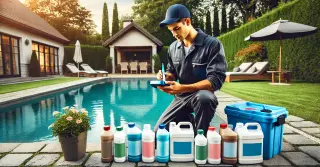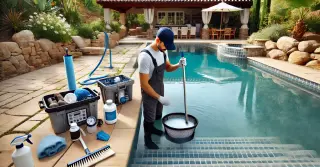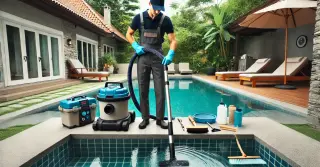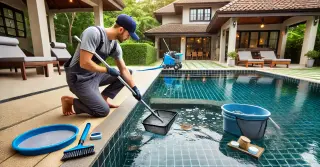Pool Chemical Balance Aberdeen ID

Maintaining the proper chemical balance is crucial for a safe and healthy swimming environment. Balanced chemicals inhibit algae and bacteria, ensure clear water and protect pool surfaces and equipment.
- Maintaining Proper pH: Your pool's pH level is a measure of its acidity or alkalinity. Optimal pH levels range from 7.2 to 7.6. Low pH levels result in acidic water, causing skin irritation and equipment corrosion. High pH levels make the water alkaline, leading to cloudiness and scaling. Consistently testing and adjusting pH levels is crucial for comfort and safety.
- Keeping Chlorine Balanced: Chlorine is a key component in pool sanitation, as it kills bacteria, algae, and other harmful microorganisms. The ideal chlorine level should be between 1-3 ppm (parts per million). Too little chlorine can lead to unsanitary conditions, allowing bacteria and algae to thrive. High chlorine levels result in skin and eye irritation and create a strong chlorine smell. Frequently checking and balancing chlorine levels maintains sanitation and comfort.
Optimal Alkalinity LevelsTotal alkalinity is a crucial element of pool chemistry. Alkalinity acts as a buffer for pH levels, helping to prevent drastic changes in pH. The optimal total alkalinity range is 80-120 ppm.
- Avoiding pH Fluctuations: Correct alkalinity levels ensure stable pH, preventing rapid pH changes that irritate skin and damage surfaces. Low alkalinity causes pH levels to fluctuate, making it difficult to maintain a consistent balance. Excessive alkalinity results in cloudy water and scaling. Consistently monitoring and adjusting alkalinity levels is vital for a balanced and stable pool.
- Balancing Calcium Levels: Calcium hardness measures the dissolved calcium in water. Proper calcium hardness levels range from 200 to 400 ppm. Low calcium levels result in corrosive water, harming surfaces and equipment. High calcium levels lead to scaling and cloudy water. Consistently monitoring and adjusting calcium hardness is essential for pool protection and clear water.
Proper Chemical Use and StorageUsing and storing pool chemicals safely is crucial for safety and efficiency. Keep chemicals in a cool, dry location, away from direct sunlight and out of reach of children and pets. Always follow the manufacturer's instructions for correct dosing and application.
- Measuring and Mixing Chemicals: Measuring pool chemicals accurately is crucial for maintaining balance. Using too much or too little can disturb chemical balance and water quality. Always use a clean, dry measuring cup or scoop and avoid mixing chemicals directly. Mix in water as needed, following guidelines carefully.
- Understanding Chemical Reactions: Some pool chemicals can react dangerously when mixed. Never mix chlorine with acid, for example. Knowing these interactions avoids accidents and ensures safe use. Keep chemicals separate and handle with caution to prevent harmful reactions.
Ensuring the right chemical balance in your pool is essential for a safe, clean, and enjoyable swimming environment. By frequently testing and balancing pH, chlorine, alkalinity, and calcium, you can keep your pool water in optimal condition.
Safe handling and storage of pool chemicals enhance the health and safety of your pool.




